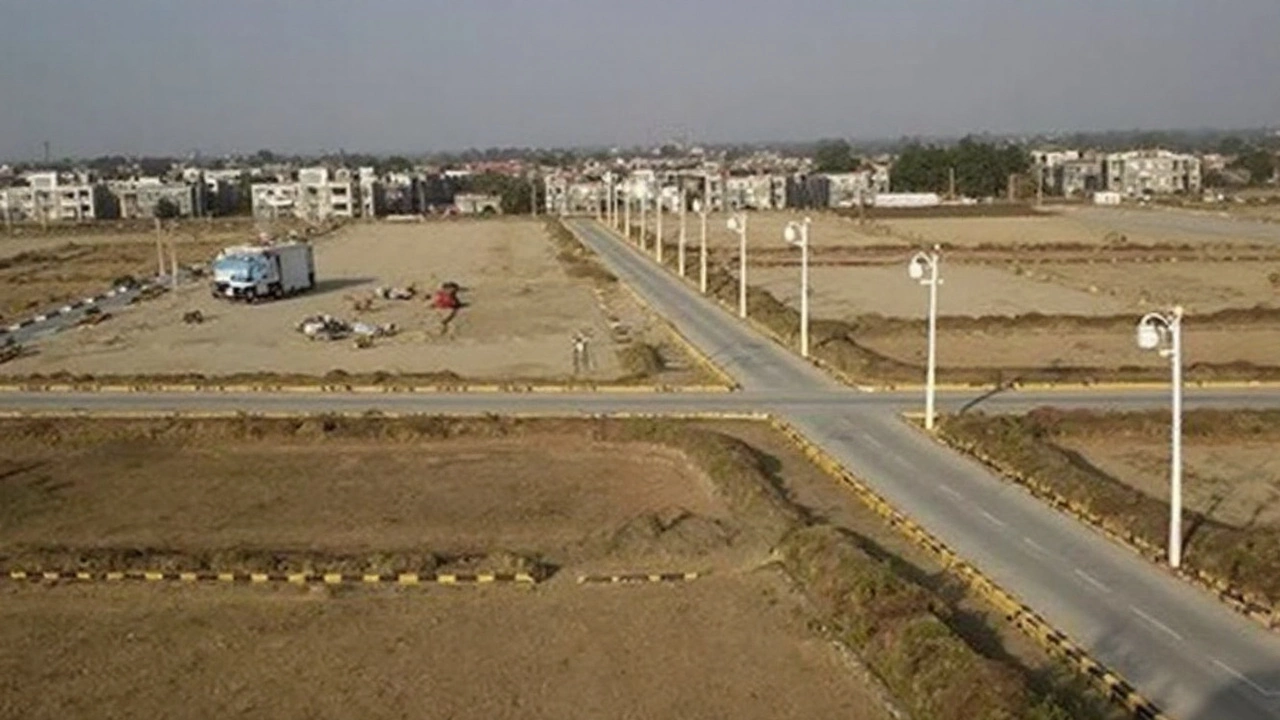What the Saumitra Vihar Scheme Offers
The Uttar Pradesh Housing and Development Board (UPAVP) finally lifted the curtain on its ambitious Saumitra Vihar project after months of bureaucratic delays. Located on New Jail Road, close to Gosainganj in the Mohanlalganj belt of Lucknow, the development promises a mix of residential and commercial opportunities spread over two phases.
Each phase will release roughly 2,000 plots, split between housing and shop‑floor spaces. The board has carved out specific allocations for three income categories:
- EWS (Economically Weaker Section): 10% of the total plots, sized at 30 m², priced to meet first‑time buyer budgets.
- MIG (Middle Income Group): Another 10% with 65 m² plots, offering a step‑up in size and amenities.
- HIG (High Income Group): Remaining plots ranging from 128 m² to 300 m², targeting families looking for larger homes.
Residential plots also come in 80 m² to 200 m² increments, while commercial units are sold at a fixed rate of ₹23,000 per square meter. By mixing use‑types, UPAVP hopes to create a self‑sufficient neighbourhood where residents can live, shop, and work without long commutes.

How the Lottery and Allocation Process Works
The lottery, held on September 22‑23, 2025, is UPAVP’s way of ensuring a transparent draw for the coveted plots. Deputy Housing Commissioner Chandan Kumar Patel confirmed that registrations opened only after the scheme received all procedural clearances and land‑title documentation.
Priority is being given to farmers who handed over their land under a novel pooling arrangement – the first of its kind in Uttar Pradesh. Under this model, landowners become stakeholders in the development, receiving proportional plot allocations or compensation once the project is complete.
After the farmer quota is filled, the remaining plots enter the general lottery pool. Applicants must submit proof of income, identity, and eligibility for the category they wish to apply under. The board then conducts a computerized draw, assigning plot numbers to successful entrants.
Those who win a plot will be required to pay a booking amount within ten days, followed by staggered installments as per the payment schedule released by UPAVP. Failure to meet deadlines can lead to forfeiture and re‑allocation to the next in line.
Industry observers see Saumitra Vihar as a litmus test for the state’s broader land‑pooling strategy. If the scheme delivers on its promises – affordable housing, efficient land use, and speedy construction – it could pave the way for similar projects across Uttar Pradesh’s rapidly urbanising districts.
For now, the lottery’s outcome has sparked optimism among Lucknow’s middle class and aspiring homeowners. With clear reservation policies, a transparent draw, and a mix of plot sizes, Saumitra Vihar is positioned to become a benchmark for inclusive urban development in the region.



